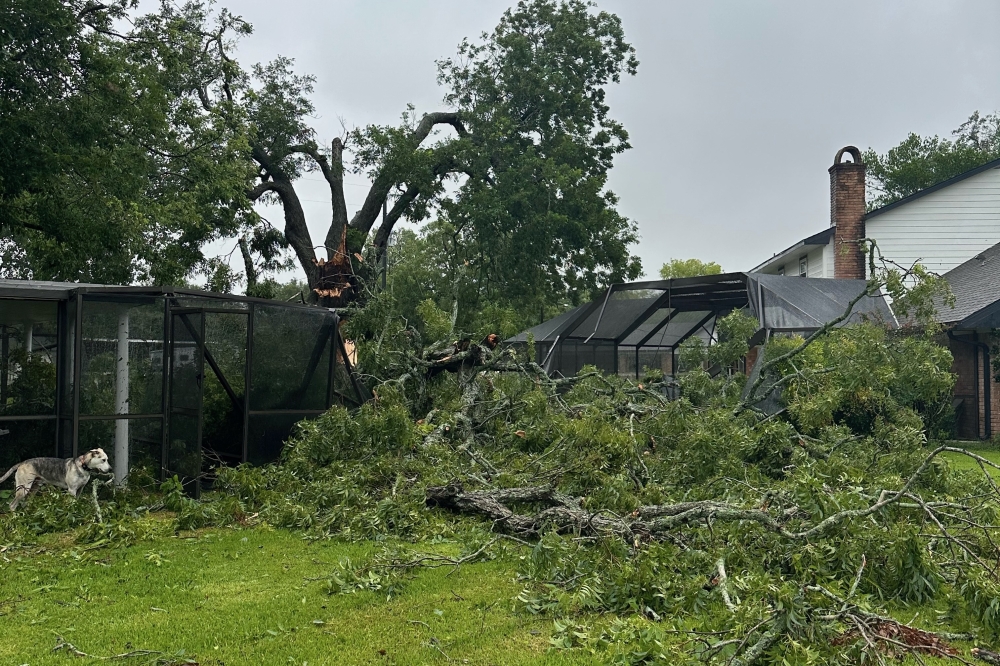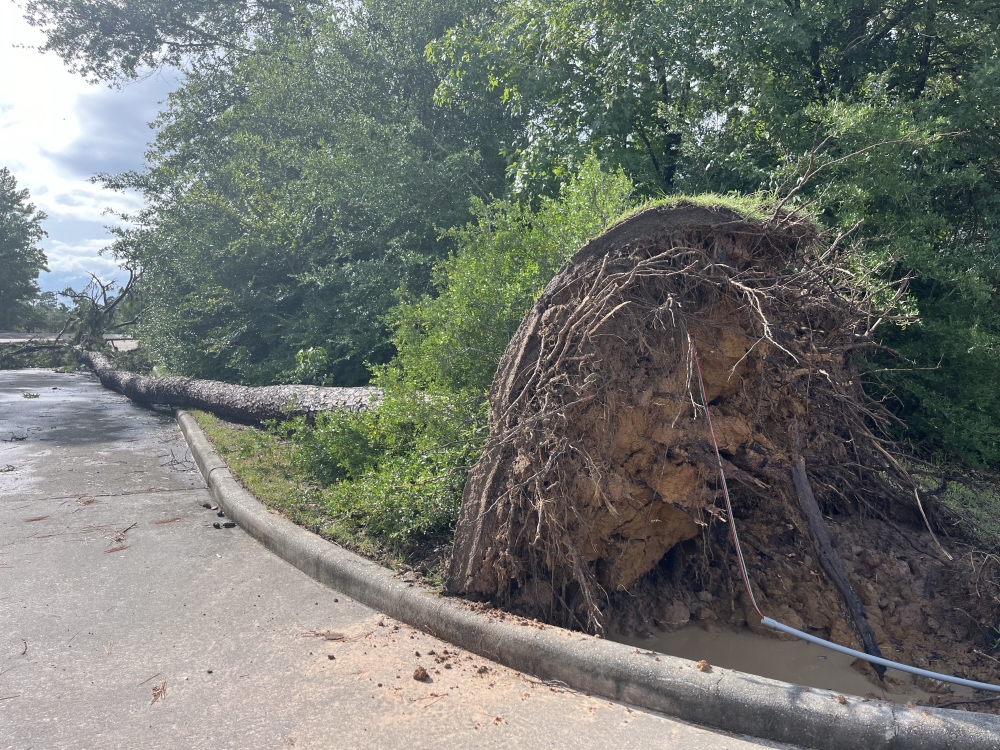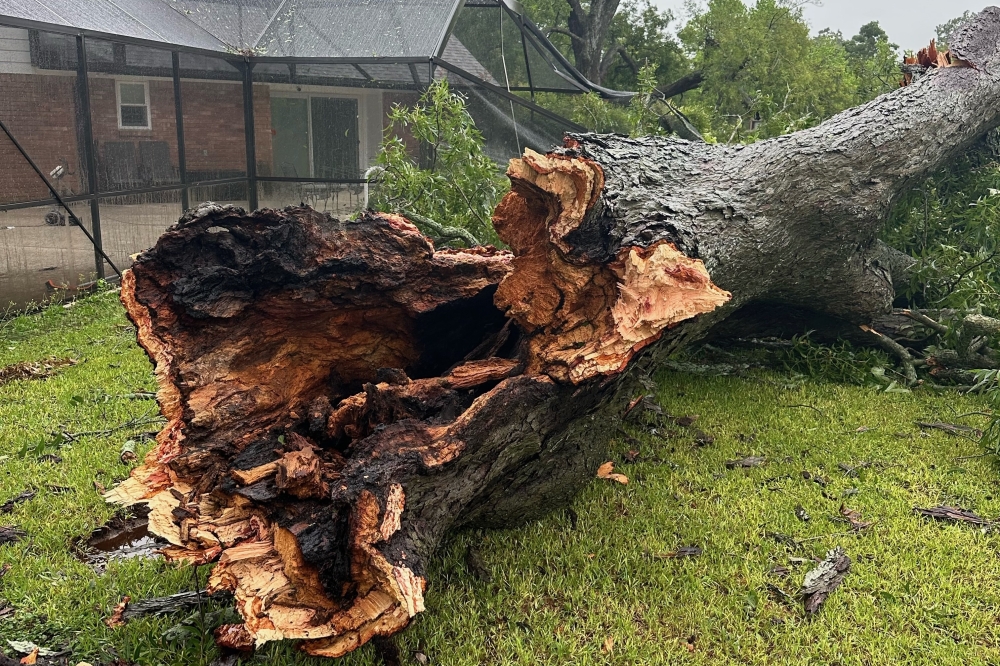The 150- to 200-year-old pecan tree was tied as 12th largest of its species on the Texas A&M Forest Service’s Texas Big Tree Registry, Linegar said. Since his family moved into the home off Shady Lane in the summer of 2022, the mountain-like tree has served as a hub for neighborhood gatherings, church parties and birthdays, he said.
“You could do that during the summer because there was so much shade with that big tree,” he said. “It just really made it such an enjoyable area that we liked using and having people over, so it’s sad to see a lot of that go.”
In a nutshell
Linegar isn’t alone in his loss, as the Texas A&M Forest Service estimates Beryl’s winds affected 50% of the Houston area’s urban trees, said Jordan Herrin, regional forester with the Texas A&M Forest Service.

Overall, some 7.8 million acres of forestland were potentially impacted by winds ranging from 39-80 mph, according to a Texas A&M Forest Service news release.
How it happened
While tree damage is expected during major weather events, Beryl’s winds caused more damage to forestry due to the stress Houston’s trees have undergone in recent years, Herrin said.
Storm events such as Winter Storm Uri in February 2021 and droughts in summer 2022 and 2023 put an unusual amount of stress on the trees, he said. Droughts can kill trees’ root systems, though it’s difficult for homeowners to detect.
“These trees, they’re getting stressed year after year all across Texas and especially in the Houston area,” Herrin said. “What’s been different is it's been cycles where it's been lots of rain and then really quickly drought; lots of rain, really quickly drought; and so it's a lot more of a shock to these trees.”
Why it matters
Trees benefit Houston’s ecosystem for various reasons, including providing shade to help cool urban areas, Herrin said. Urban forested areas can have average temperatures of 2.9 degrees lower than unforested areas, according to the U.S. Environmental Protection Agency.
Additionally, trees can mitigate flooding in areas like Houston by absorbing water through their roots, creating more penetrable soils for water, slowing overland flow and protecting soil from erosion during flooding events, Herrin said.
“It’s hard to quantify at this point, but [something] definitely worth watching is just [how] the tree cover change, and specifically where that tree cover change was, is going to affect just flood water mitigation across the Houston area,” he said.

Local governments are responsible for maintaining trees in public right-of-way, but homeowners are tasked with trimming and keeping their trees healthy. This can lessen the likelihood of branch breakage and root upheaval during storm events, Herrin said.
Herrin suggested several steps homeowners can take prior to a storm:
- Make sure trees are trimmed, pruning out weak branching or deadwood in a tree
- Thin the crown to allow wind to pass through branches
- Properly water trees to encourage deeper root systems
- Hire a certified arborist to assess tree health, and safely and properly prune the trees
What to know
The long-term impact of Beryl on the Houston area’s trees remains to be seen, but the Texas A&M Forest Service intends to continue damage assessments into the week of July 15, Herrin said.
As residents begin clearing downed trees from their properties, Herrin encourages them to remain cautious.
“Working around trees, especially after a storm, can be very dangerous,” he said. “Trees can get put into weird binds after a tornado or a hurricane or wind. They can have power lines in them that could be charged. So just [make] sure that when you are getting out and working in your trees, especially after a storm, that you're looking for those hazards.”

Linegar said he’s started the process of hauling off thousands of pounds of Everest’s lumber. With roughly half of the tree gone, he said he’s unsure if the loss will cause its total decline.
“There’s kind of an ownership element that you have this cool historic tree, how far back it dates and the people that have lived there before and lived with this tree,” he said. “So there's an element of sadness to see something like that fall.”
The Texas A&M Forest Service offers various tree-related resources, including chainsaw safety tips, how to determine if a tree is salvageable and how to hire an arborist.





